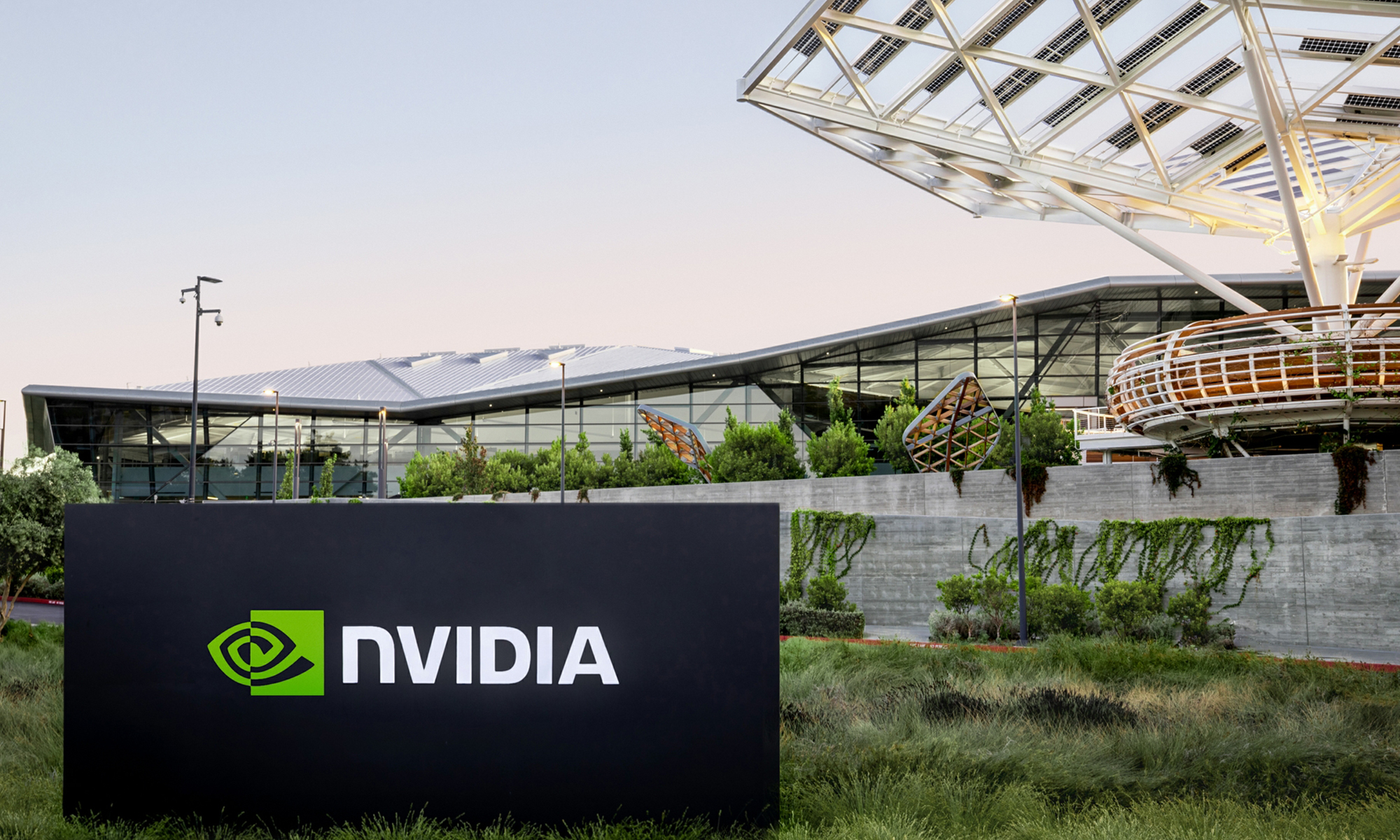Over the past 30 years, there have been no shortage of next-big-thing trends and innovations to capture the attention of growth-seeking investors. The advent of the internet, genome decoding, business-to-business commerce, the rise of China stocks, 3D printing, cannabis, blockchain technology, and the metaverse, are just some of the examples of game-changing growth trends that fueled the fear-of-missing-out (FOMO) from investors.
At the moment, no next-big-thing innovation exemplifies the FOMO trade quite like artificial intelligence (AI).

Image source: Getty Images.
Nvidia has become the face of the artificial intelligence (AI) revolution
With AI, software and systems are handling or overseeing tasks that would normally be taken care of by humans. The utilization of machine learning is what allows software and systems to acquire new information and "learn" so they can become more effective at their tasks.
Artificial intelligence has presumed utility across almost every sector and industry, which is probably why the analysts at PwC expect AI to increase global gross domestic product by a staggering $15.7 trillion come 2030.
No company has directly benefited more from the AI revolution than semiconductor stock Nvidia (NVDA 0.32%). Since the start of 2023, Nvidia's market cap has catapulted higher by nearly $2 trillion, with the company closing in on Apple, which is currently the second-largest publicly traded company in the U.S.
The fuel stoking the fire for Nvidia is the company's A100 and H100 graphics processing units (GPU), which are currently the dominant GPUs in high-compute data centers. With demand handily outpacing the supply of A100 and H100 GPUs, Nvidia has enjoyed otherworldly pricing power, which has sent data center sales skyrocketing.
But if there's anything I've learned after investing on Wall Street for 26 years, it's that if something looks too good to be true, it probably is. Nvidia may be Wall Street's hottest AI stock right now, but there are 10 very good reasons I wouldn't touch it with a 10-foot pole.

NASDAQ: NVDA
Key Data Points
1. There's a high probability of margin cannibalization
To start with, there's a strong likelihood that Nvidia could cannibalize its own gross margin as it expands production.
A relatively modest increase in cost of revenue last year makes it pretty clear that pricing power, not an increase in production, drove the bulk of Nvidia's data center sales growth. As GPU scarcity wanes -- both through an increase in competition and an expansion of Nvidia's own production -- the company's pricing power should decline. That's a net-negative for the company's gross margin.
2. External competition is picking up
Although Nvidia could control 90% or more of AI-accelerated GPU share in 2024, according to analysts at Citigroup, sustaining its share moving forward could prove difficult.
Advanced Micro Devices unveiled its MI300X AI-GPU as a direct competitor to Nvidia in June 2023, with the goal of stepping up production in 2024. Meanwhile, Intel debuted its Gaudi3 AI chip last year, which is targeted at displacing Nvidia's H100 chips for generative AI software. As AMD and Intel begin the rollout of competing GPUs, Nvidia's pricing power and market share would be expected to fall.
3. Internal competition is an even bigger problem
While it's well-understood that external competition is growing, what might not be as obvious for investors is that Nvidia's top customers are potential competitors, too.
In no particular order, Microsoft, Meta Platforms, Amazon, and Alphabet account for approximately 40% of Nvidia's total sales. Not only are these businesses unlikely to keep up the level of AI-GPU buying based on their recent order history, but all four are developing AI chips of their own. There's a good chance they won't be as reliant on Nvidia come 2025 or 2026.
4. U.S. regulators are restricting shipments to China
A fourth reason I'm not touching Nvidia with a 10-foot pole is because U.S. regulators aren't doing the company any favors.
On two occasions, regulators have restricted exports of Nvidia's high-powered GPUs to China, the world's No. 2 economy. This includes the toned-down A800 and H800 chips Nvidia specifically designed for China after an initial round of export restrictions. Regulators are likely costing Nvidia billions of dollars in sales each quarter.
5. There hasn't been any insider buying in more than three years
Over the past three years, Nvidia insiders have been steadily selling their shares. Keep in mind that there are viable reasons to sell stock that aren't necessarily negative, such as for tax purposes.
But there's only one reason insiders buy stock: They expect the value of their shares to increase. The last insider purchase at Nvidia occurred in December 2020. If the company's executives won't buy shares of their own stock, it probably means everyday investors shouldn't, either.

Image source: Getty Images.
6. Every next-big-thing investment goes through an early stage bubble
One of the top reasons to keep your distance from Nvidia is that history is undefeated -- at least when it comes to next-big-thing investments. Every top trend/innovation over the past 30 years has worked its way through an initial bubble, without exception.
To be clear, early stage bubbles don't preclude next-big-thing innovations from succeeding. Even though some dot-com companies collapsed in the late 1990s and early 2000s, the internet proved to be a transformative tool for many surviving businesses. AI has the potential to transform the global economy just like the internet did. However, history suggests that investors have, once again, overestimated the adoption rate of a new trend or innovation.
7. Businesses lack a concrete game plan for deploying AI solutions
In addition to investors having a lengthy track record of incorrectly forecasting the adoption of perceived-to-be game-changing trends, businesses sometimes have terrible track records of game-planning with new innovations.
As an example, businesses were eager to invest in the metaverse just a few years ago without being able to define the parameters of what "the metaverse" would entail. Without these concrete game plans, metaverse investments sank considerably in 2023.
Although AI has broad application, most companies lack a concrete blueprint for how it's going to boost their sales and grow profits. It's a scary reality for a megacap stock like Nvidia that's added close to $2 trillion in market cap in a little over 14 months.
8. Recession indicators are concerning for a cyclical company with a premium valuation
An eighth reason I wouldn't touch Nvidia stock with a 10-foot pole is because a growing number of money-based metrics and predictive indicators are suggesting a U.S. recession is coming. At the end of the day, tech stocks like Nvidia are cyclical, and FOMO moves typically require a strong economy.
Some of the most-worrisome recession indicators right now include:
- Only the fifth notable decline in M2 money supply since 1870.
- Only the third drop of at least 2% in commercial bank credit since 1973.
- The largest yield-curve inversion in more than four decades.
- One of the longest consecutive declines in the Conference Board Leading Economic Index (LEI) since its inception.
NVDA Price to CFO Per Share (TTM) data by YCharts.
9. The valuation makes no sense
The most common objection to owning Nvidia stock is its valuation. Although its growth rate was off the charts in fiscal 2024 (ended in late January), the company's sequential quarterly sales growth has begun to slow. That makes its valuation of nearly 73 times trailing-12-month (TTM) cash flow, as of the closing bell on March 8, 2024, a tough pill to swallow.
History also serves as a warning. With the exception of Amazon and Cisco Systems during the dot-com bubble, no market cap-leading business has had a higher TTM price-to-sales ratio than Nvidia.
10. There are far better deals in the AI space
The 10th and final reason I wouldn't touch artificial intelligence stock Nvidia with a 10-foot pole is because there are an abundance of cheaper (and safer) options to get AI exposure without running the risk of getting clobbered by a possible bursting of the AI bubble.
As I recently pointed out, companies like Meta Platforms and Baidu are historically inexpensive and protected from significant downside by their cash-cow foundational operating segments. If you absolutely want direct exposure to AI infrastructure, you can get it from the likes of Dell Technologies and Hewlett Packard Enterprises. Both provide customizable AI servers, but trade at a considerably lower multiple to forward-year earnings and TTM sales than Nvidia.
Nvidia has all the hallmarks of being in a bubble.






